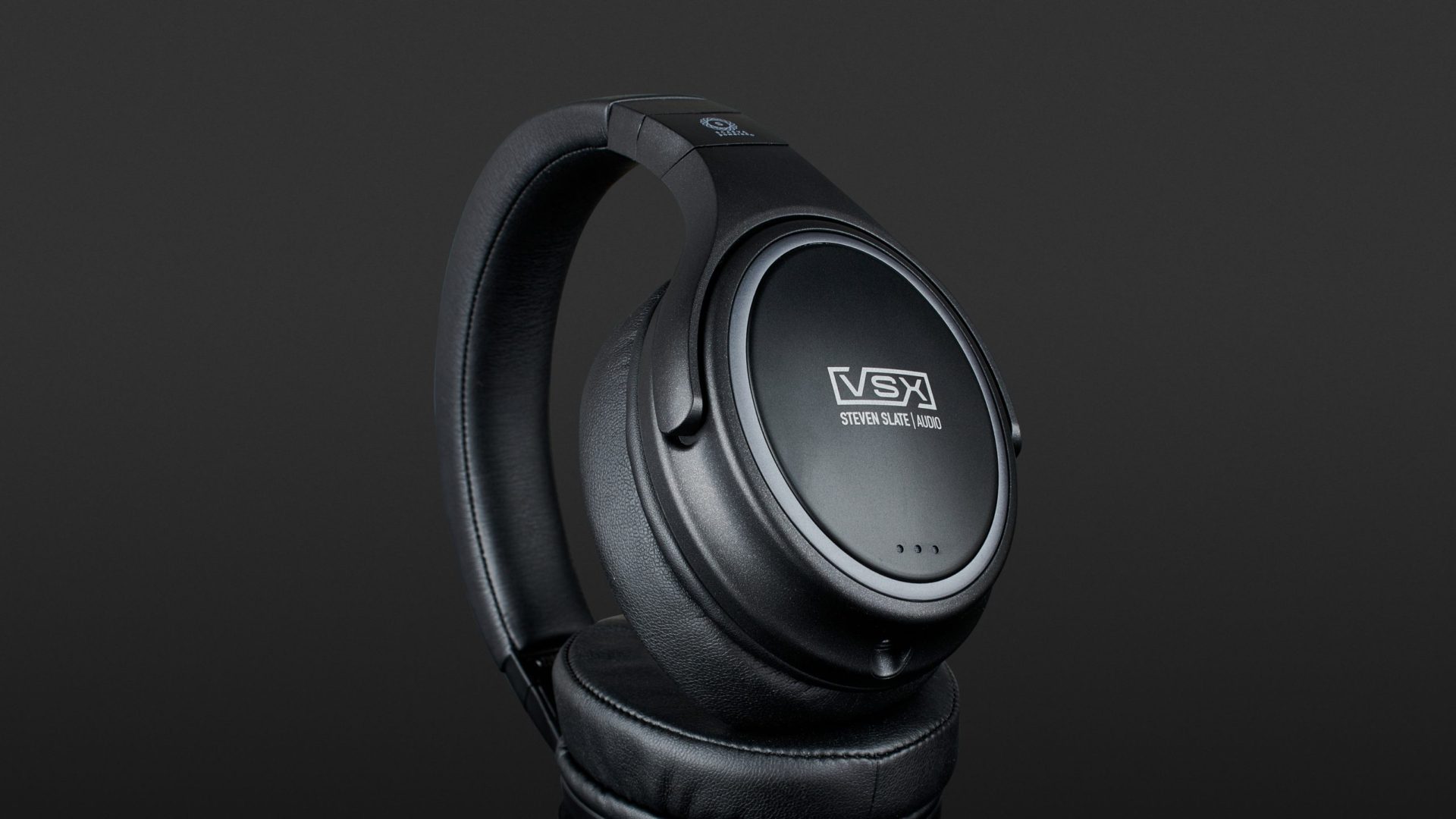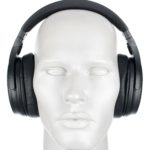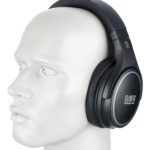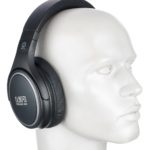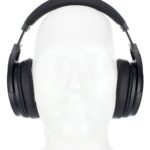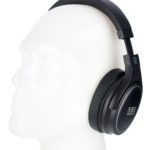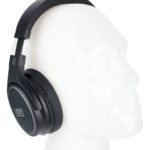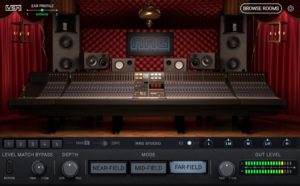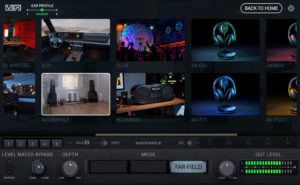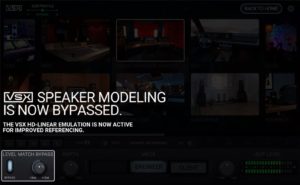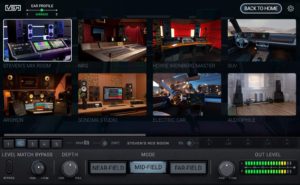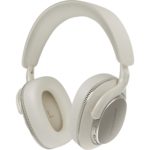With the VSX, Steven Slate Audio addresses some well-known problems that can happen when mixing with headphones. For just under 500 euros, they provide a flexible virtual workstation that linearises the sound output or provides it with the sound characteristics of renowned sound control rooms and other locations. Among other things, this makes it possible to make an extended evaluation of a mix in different rooms, using the corresponding headphones, if their parameters are known to the correction software. If you regularly use headphones for mixes, VSX can be a valuable aid. Although it does not completely replace a real control room, the results are impressive – provided you have the necessary training and experience. The VSX system is suitable for professional sound producers, mobile producers and hobbyists, but not so much for pure music enjoyment.
With VSX, Steven Slate Audio present a fully-featured virtual control room. The mix of DAW plug-in, dedicated headphones and a selection of virtual mixing rooms, locations and monitoring devices creates a compact assessment facility for audio engineering work. With the necessary training, it is possible to work astonishingly accurately without being in a real recording studio. For about 500 euros, this is absolutely remarkable.

Music reproduction via loudspeakers differs from headphones in essential ways. For example, there is forward localisation of sound sources, crosstalk between stereo channels and the defining influence of room acoustics. Consequently, the perception of reproduced sound is different.
For sound engineers, this is a real problem, as they want to make confident decisions when evaluating and processing sound sources, which should subsequently also prove to be correct on other output systems. This is hard enough without headphones because every loudspeaker and room sounds different, which is why professional recording studios have acoustically optimised control rooms that make such reliability possible.
This is where the US manufacturer Steven Slate Audio comes in with its VSX system – a combination of hardware and software. The product tackles the problem of the lack of spatial sound through headphones and the transfer of audio tasks between loudspeakers and headphones.
Dynamic headphones
The matte black, closed-back, over-ear headphones with a single-sided, replaceable cable with a 3.5 mm jack connection if required, arrive in an attractive matte black cardboard slipcase. A matching plug adapter for the 6.3 mm format and a protective case for safe storage are included in the package. The headphones are made of plastic and padded with imitation leather. The headband is adjustable in length, and the earcups can be tilted and rotated by 90 degrees, although it feels like they rotate in the wrong direction. The dynamic construction uses beryllium-coated drivers driven by neodymium magnets. The bass reproduction is supported by a separate bass reflex system (APS/Acoustic Ported Subsonic).
… and software
The second component of the VSX is software that hooks into the audio output of the production environment (DAW) and there makes sound adjustments in real-time. The software is available after registration on the manufacturer’s website. The system components are installed on the corresponding Windows/Mac computer via the software manager. The common plug-in formats VST2/3, AU and AAX are supported, and these allow operation with almost any current DAW. In principle, corrected sound output outside the production environment is also possible via auxiliary programmes, but the manufacturer could still improve on this point. The software itself is protected by a copy-protection procedure (iLok) locally or via dongle.
In practice
The headphones can be used independently of the software. They are light as a feather and offer good long-term wearing comfort, although in warmer temperatures you might start to sweat under the synthetic leather pads. The manufacturer has worked on the stability of the construction, and the earpieces in the current 23 series should be sufficiently robust for use in the studio. Nevertheless, the construction is less robust than that of other headphones in a comparable price range.
In practice, the headphones are connected to the relevant audio interface. You connect the VSX software to the master or monitor channel of your DAW (Pro Tools, Cubase, Studio One, Logic, Live etc.). For different routing requirements, such as switching to real studio monitors, the manufacturer offers support on their website.
VSX offers an attractively designed user interface that offers a selectable simulated control room or alternative monitoring situation. The current version 2.0 offers no less than five studio control rooms, such as those created by Steven Slate himself, mastering icon Howie Weinberg or Hollywood’s NRG Studio. Each of these has its own acoustics as well as individual monitors – from Auratone to the large PMC model. Depending on the selection, you then have the choice between near-field, mid-field and main monitors, which each have their own sound.
The acoustic properties of the room and the monitors are calculated in real-time by the signal. The manufacturer calls this “Binaural Perception Modelling” (BPM). Fortunately, this hardly requires any significant computing power on an up-to-date computer, so VSX barely reduces the resources of the DAW.
The result is quite impressive. There is the option of switching to pure linearised headphone sound with adjustable level compensation – useful when mixing specifically for headphones. For this task, an additional linear simulation called “SA-Linear” is available. For additional optimisation, there are further parameters for fine-tuning and adapting to your own ear, a switchable 4-band equaliser as well as the option to automatically remove the simulation from the signal path in case of a final output. Be careful, however: DAWs like Ableton Live have a cue bus that bypasses the level compensation (i.e. the plug-in) and therefore leads to annoying jumps in the level.
A perfect pair?
The strength of VSX is also its greatest weakness: in principle, the software can be used with other headphones. But this makes little sense: hardly any passive headphones can claim to have full linearity. And the room simulation only works so well because Steven Slate Audio knows the specific parameters of these headphones and compensates for them via the software. Although the individual headphone is not measured, the series is.
However, perfection is not always the only thing that matters. Control rooms and loudspeakers are rarely flawless either. And sometimes even the opposite is required: the sound of a popular club can definitely influence the mix. It’s not for nothing that many producers test their work on location. And finally, there is the ordinary music listener. They sometimes listen to music with their audiophile hi-fi system, sometimes in the car and sometimes via headphones.
To make comparisons possible, VSX also provides such “rooms”: the ideal home system, variations of a club that are neutral or bass-emphasised, the classic boombox as well as six different headphones from AirPods to the expensive Audeze LCD-4z, some with switchable impedances, wired or via Bluetooth.
With this selection, VSX becomes a powerful, portable control room. It offers the possibility to work with headphones but without loudspeakers. Specifics of speaker reproduction can be taken into account, and scenarios in which music is heard at the consumer’s home can be simulated – with the aim of achieving work that is tonally universal.
Sound
The focus is on sound. These headphones, developed in cooperation with Scavea Technologies, form the basis of the system. The intention is to provide a deliberately unembellished reproduction that is as linear as possible. The construction is closed, presumably for practical reasons. This means the VSX is a truly mobile control room that makes it possible to work at higher levels in any location without disturbing the surroundings.
I listened to a basic undistorted version of a track on a Shanling DAP M3X. The VSX hardware turned out to be balanced-sounding, high-level over-ear headphones, accurate sounding with good frequency and channel separation. The evaluation of mixes shows the necessary clear differences. For example, the slightly busy recorded vocals of Nancy Sinatra and the left-right distribution of instruments on “In My Room” are immediately recognisable and mark a significant difference to, by comparison, the powerful level and added transparency of a recent production such as “Moonshot” by Myles Kennedy.
The bass range was rather slim. Low bass was reproduced, but the level dropped a little. In the midrange, vocals and acoustic instruments were clear and detailed. Distorted guitars were generally in tune and did not stand out unpleasantly. Performance in the highs was also good but did not reach the airiness and transparency of more expensive open systems. Tonally, the edge of harshness was not unintentionally crossed. Furthermore, the stereo stage was built up securely and movements were reproduced comprehensibly. Spatial effects were discernible and assessable, while spatial depth was lacking, as with most headphones. Finally, differences in dynamics could also be well recognised. In short: the headphones delivered a thoroughly appealing result. However, I wouldn’t go so far as to put them on a par with the Sennheiser HD 660 S or the Neumann NDH 30.
From the virtual room
The desired room simulation is only achieved with the accompanying software. And indeed, this can deliver quite authentic results. When switching to a studio control room, the sound impression became more spatial and shifted forward in terms of location. This made it easier to mix when switching between headphones and the control room speakers.
Switching to headphone-only via the internal bypass button revealed the problem: the headphone mix sounded different in key areas, such as the mids, but also with spatiality. When the control simulation was switched on, however, the comparison with a loudspeaker became much better. At the same time, it must be clearly stated that the choice of control rooms and monitors is also a matter of taste. In practice, you will probably choose a few favourites for your everyday work. For this purpose, VSX provides five snapshots for quick access.
Apropos: in order to adjust the ears to a new reference without prejudice, the plug-in offers a practical 2-second pause when switching, if required. This is exceedingly useful because it is all too easy for the ear to be misled when making comparisons.
I found it difficult to evaluate the authenticity of the room simulation because I was not given an A/B comparison with real rooms. However, the translation between different rooms and monitoring systems was guaranteed. Ultimately, VSX allows you to work more confidently on a mix that works across the board. Noticing differences at the touch of a button is enlightening, even if the task of finding a sweet spot takes effort.
In the end, the most important aspect remains unaffected: a sound engineer will generally rely on their personal general experience as well as their specific knowledge of space and monitoring. And this is exactly what is essential when working with VSX, especially since the system expands the possibilities for comparison. A longer phase of familiarisation and acclimatisation is therefore inevitable. And at this point, I think it would make sense for Steven Slate Audio to open up the system to integrate profiles from other headphones. Corresponding approaches are familiar from Sonarworks (to the review) or dSoniq Realphones (to the review). Conversely, other virtual control rooms, such as those from Waves or Acoustica Audio, do not offer any specific headphone adjustment. And this certainly becomes apparent sonically through VSX’s audible advantage.
Technical specifications
- Ear couplingOver-ear
- Typeclosed
- Transducer principledynamic
- Frequency response (headphones)20 - 20.000 Hz
- Impedance39,3 ohms
- Sound pressure level (SPL)99,36 dB
- Pressure averaged from big and small head687 g
- Weight with cable268 g
- Weight without cable281 g
- Cable length190 cm
What's in the box
- 6.35mm stereo jack
- Serial number for software
- Travel case
Special features
- Colour: Onyx/Galaxy Black Plattform: Mac or PC
- Platform: Mac or PC
- Bit depth: 64-bit only
- Format: VST, AAX Native, AU
- Hardware requirements (Mac): macOS 10.10 - 11.0 (12.0 Monterey is not supported)
- Hardware requirements (PC): Windows 7 or higher
- RAM Minimum: 4 GB










